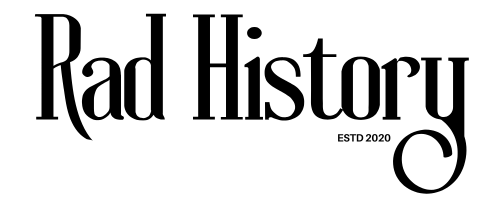Are you quietly dreading the next rent increase while wondering if there’s some secret financial lifeline you missed? Rent costs continue their slow, stubborn climb while incomes play catch-up—on crutches. And yet, scattered across city websites, housing authority pages, and buried municipal PDFs are rent relief programs that rarely get any press. These aren’t handouts; they’re public resources that were built for moments like this—when you just need a break to keep your life stable.
But here’s the catch: many of these grants operate on a “first come, first funded” basis. Blink and they’re gone until next fiscal year. So let’s cut through the noise and get into how local housing grants really work—and how to get to them before they disappear like a rent-controlled unicorn.
What Exactly Are Local Housing Grants?
Think of local housing grants as hyper-targeted assistance programs—typically funded by city councils, counties, or housing authorities—to help residents stay housed when times get tough. Unlike federal rental aid that’s often linked to sweeping legislation or national emergencies, these are boots-on-the-ground programs shaped by local needs and budgets.
Here’s what they tend to cover.
- Past-due rent payments to avoid eviction
- First month’s rent and security deposits for those moving into new housing
- Utility assistance bundled with rent support
- Transitional help for people recovering from job loss, medical hardship, or domestic violence
They don’t require repayment, and you don’t need to be living in public housing to qualify. Some programs even include tenants living in market-rate apartments, provided they meet income or situational thresholds.
Who Actually Qualifies?
This is where things get interesting. Local programs are far more varied—and sometimes more forgiving—than federal ones. Eligibility often hinges on specific criteria.
- Income level (typically 30–80% of area median income)
- Proof of hardship (job loss, divorce, illness, or unexpected expenses)
- Residency in a specific city, county, or neighborhood
- Rental status (leaseholders vs. informal tenants)
In many cities, even full-time workers earning middle incomes are qualifying due to rising rent burdens. If your rent is gobbling up more than 30–40% of your paycheck, your local housing department may already consider you “rent burdened”—a major box to check in many applications.
Why No One’s Talking About This
There’s no massive ad campaign for these programs. No influencers doing TikToks about municipal aid. And city websites? Let’s just say they weren’t built with UX in mind.
The real problem is that local grants live in the bureaucratic equivalent of a forgotten junk drawer. They’re not widely publicized, they use confusing jargon (ever tried deciphering “CDBG-CV Round II funds” at 11 p.m.?), and they rely heavily on nonprofits or housing counselors to spread the word.
So unless you’re already plugged into housing advocacy circles, you probably haven’t heard about them. And if you wait to look until you’re facing eviction, you might miss the window entirely.
Where to Look—And How to Get Ahead
Here’s how to start sniffing out those elusive dollars before someone else grabs them.
- City and County Housing Websites: Look for sections labeled “tenant assistance,” “emergency rental assistance,” or “housing stability programs.” Bookmark them.
- Community Action Agencies: These often act as the administrative arms for local rent grant disbursement. They know the ropes.
- Local Libraries and Resource Fairs: Weirdly effective places to find pamphlets and flyers about programs you’ll never find in a Google search.
- 211 Helpline or Local Housing Hotlines: They can connect you with available programs without the headache of navigating clunky government portals.
- Neighborhood Facebook Groups and Subreddits: Crowdsourcing works—people often share deadlines and open applications here before official channels do.
Pro tip: Once you find a grant, apply even if you’re not sure you qualify. Many programs let housing counselors review borderline cases. The worst they can say is no—and that “no” may come with referrals to other programs.
Application Tips to Boost Your Odds
The trick to getting approved isn’t just speed—it’s preparation. These grants are often awarded based on need, but also on paperwork readiness. Here’s how to stay ahead of the game.
- Have key documents ready: Lease agreement, proof of income, utility bills, and a written hardship statement.
- Be specific about your situation: Vague language like “I’m struggling” doesn’t help. Say why—job loss, reduced hours, medical bills, etc.
- Double-check deadlines: Many grant cycles are quarterly or monthly, and funds can vanish in days.
- Don’t ghost your landlord: Some programs require their cooperation to verify rent amounts or accept payments directly.
A Few Real Programs That Exist Right Now
To give you an idea of what’s out there, here are examples of real rent relief programs operating in 2025.
- Los Angeles Housing Department Emergency Rent Assistance Program: Covers up to six months of back rent for qualified households.
- Cook County Emergency Rental Assistance: Offers grants for rent and utility support for homelessness prevention and short-term rental assistance.
- Seattle Housing Stability Project: Provides short-term assistance for tenants with sudden hardship events, including lay-offs and domestic violence.
- Austin’s RENT 3.0 Program: Offers recurring monthly rent help with integrated financial coaching.
Each city tweaks the rules and funding amounts, but the takeaway is this: these programs exist—and they’re evolving fast to meet rising demand.
Why You Shouldn’t Wait Until You’re Desperate
Local rent relief programs are a lot like pop-up concerts: blink and you’ll miss them. They’re heavily dependent on annual budgets, grant renewals, and political will. When funds run out or leadership changes, the program might quietly disappear.
More importantly, being proactive means you can tap into preventive support—not just crisis help. If you’re living paycheck to paycheck with no cushion for emergencies, these grants can bridge the gap and stabilize your housing situation before things spiral.
And honestly, who wants to navigate eviction court while also job hunting?
Before the Door Closes
Housing grant programs weren’t designed to be mythical creatures hidden in government mazes. They’re just wildly underpromoted and frequently misunderstood. But for renters caught between a rock and another rent hike, they can be a lifeline that keeps you in your home, keeps the lights on, and buys you breathing room to plan your next move.
So don’t wait for a notice on your door. Start digging, start bookmarking, and start asking questions—because once these funds are gone, they’re gone. And your future self will be really glad you moved fast.





